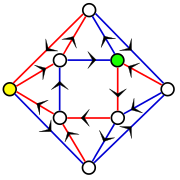Digg is a social content website with community-based news articles. “It combines social bookmarking, blogging, and syndication with a form of non-hierarchical, democratic editorial control.” News stories and websites are submitted by users, and then promoted to the home page through a user-based ranking system. This system differs from the hierarchical editorial system that many other news sites employ.In the algorithm used by the Digg creators, readers can look at all the stories submitted by other users. When a story receives a certain number of “diggs” based on the community votes, the story will be promoted to the home page. However, Digg’s ranking algorithm isn’t simply comparing the number of votes that each submission gets and then promoting the stories with the most votes. There are many factors that are considered by the creators. Some of the elements in Digg’s ranking algorithm are in the following:
1. Recent participation rank of users: When a story is submitted and while voting on stories, the rank and recent successes of users are taken into account. If a user’s story acquires a fast succession of “diggs” from “high-value” users, that user is most likely going to be promoted faster with a lower number of “diggs” than if the “diggs” were from “low-value” users. This is relevant to Google’s PageRank discussed in class. Although in this case, we are not talking about documents (webpages) but users. In the PageRank algorithm, links made by “important” documents, weigh more heavily and help to make other documents “important.” In both algorithms, this is an essential element because if a document is linked by an important document, then it should be more valued than a document linked by a less important document. For example, a document linked by the New York Times would be valued more than a document linked by the Cornell Daily Sun.
2. Friends system: The friends system allows the development of a group of users who read and trust each others articles. Users can combine articles and track friends into something similar to a watchlist. According to the creator, Kevin Rose, “You’re into what they’re digging, you’re into what they’re submitting and commenting on. And digg takes all that information under your own personal profile on digg and combines it all together in a single feed for you to pick through.”
Digg’s “friends system” goes along with the idea of social-affiliation network we learned about in class. In this case, two Digg users, can experience focal closure, which occurs when two people with a shared activity become friends. In this case, the shared activity is the Digg website, and the two people are two users who read and trust each other’s stories. As a result, focal closure can potentially develop a tightly knit group of users who all share and trust each others stories/articles.
http://blogs.zdnet.com/web2explorer/index.php?p=108
http://blogs.zdnet.com/web2explorer/?p=109
http://searchengineland.com/071128-122432.php



Posted in Topics: Technology
No Comments